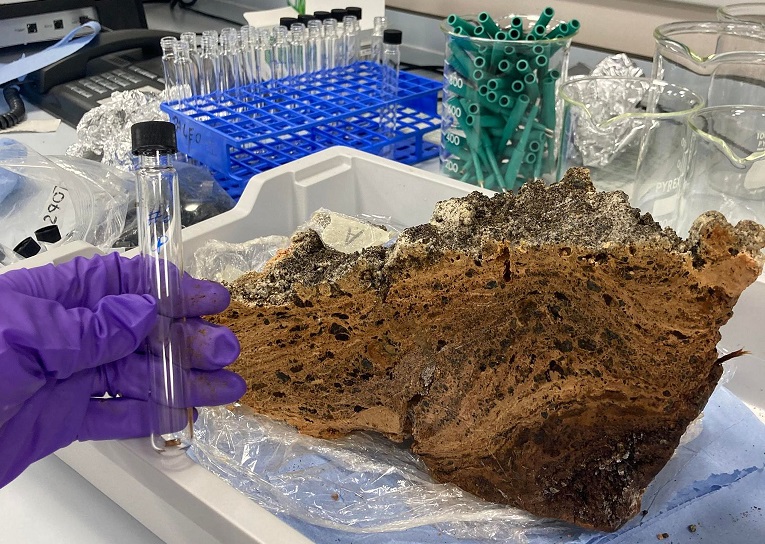First cuts: a blog by Claire

My name is Claire Penny, and I am a first year PhD student under the supervision of Erin McClymont (Durham University, ANTSIE PI), Mike Bentley (Durham University) and Dominic Hodgson (British Antarctic Survey), and over the past few weeks I have been getting stuck in cutting my first batch of fossilised stomach oil deposits, taking lots of samples and hopefully getting some good results!
So, what do I mean by fossilised stomach-oil deposits? Well, in essence, they are what remains of a snow petrel’s meal, partially digested. A snow petrel is a small, dove-sized species of Antarctic seabird which will typically forage in or at the edge of the sea ice, feeding on a variety of prey including squid, fish and krill. During the snow petrel breeding season (during the austral summer), snow petrels return to their nesting sites on the mountains poking up through the ice sheet (nuntaks), regurgitating the partially-digested prey remains in order to feed their young, as well as a defensive mechanism against predators such as the Antarctic Skua.
I have recently started the first steps of my PhD, which has involved splitting open some deposits in our labs in Geography. After cutting the deposits open, I first inspect them to explore the stratigraphy inside. My deposits have contained clear layers without signs of disturbance. I have then cut a core which has been run through our GeoTek Core Scanner. This has already given me an initial data set of elements such as copper, which is likely to be indicative of krill content. Krill is often found in waters at the edge of the sea ice pack and the open ocean, as they are reliant on biological processes and the high primary productivity found in coastal waters. It will be exciting to explore how copper and other elements change in the different deposits.
My next steps are to look at bulk stable isotope values, including nitrogen and carbon. Nitrogen is important as it how it changes tells you a lot about prey variance up and down the trophic levels. For example, you would expect to see a 3-4‰ difference if you move up a trophic level from krill to squid. Furthermore, there is a latitudinal trend in the bulk stable isotope value of carbon, as you would expect to see it decreasing towards the coastal regions and poles. I will soon also start to look at biomarkers: organic molecules which are source-specific. Their abundance, distribution and isotopic composition within each layer of the deposit can be used as a quantitative measure to reconstruct the environment from which the prey came from. Thank you for taking the time to read my first blog post. It is very exciting work that both myself and the ANTSIE team are undertaking, and I look forward to taking you along with me on my journey to becoming Dr. Penny!

